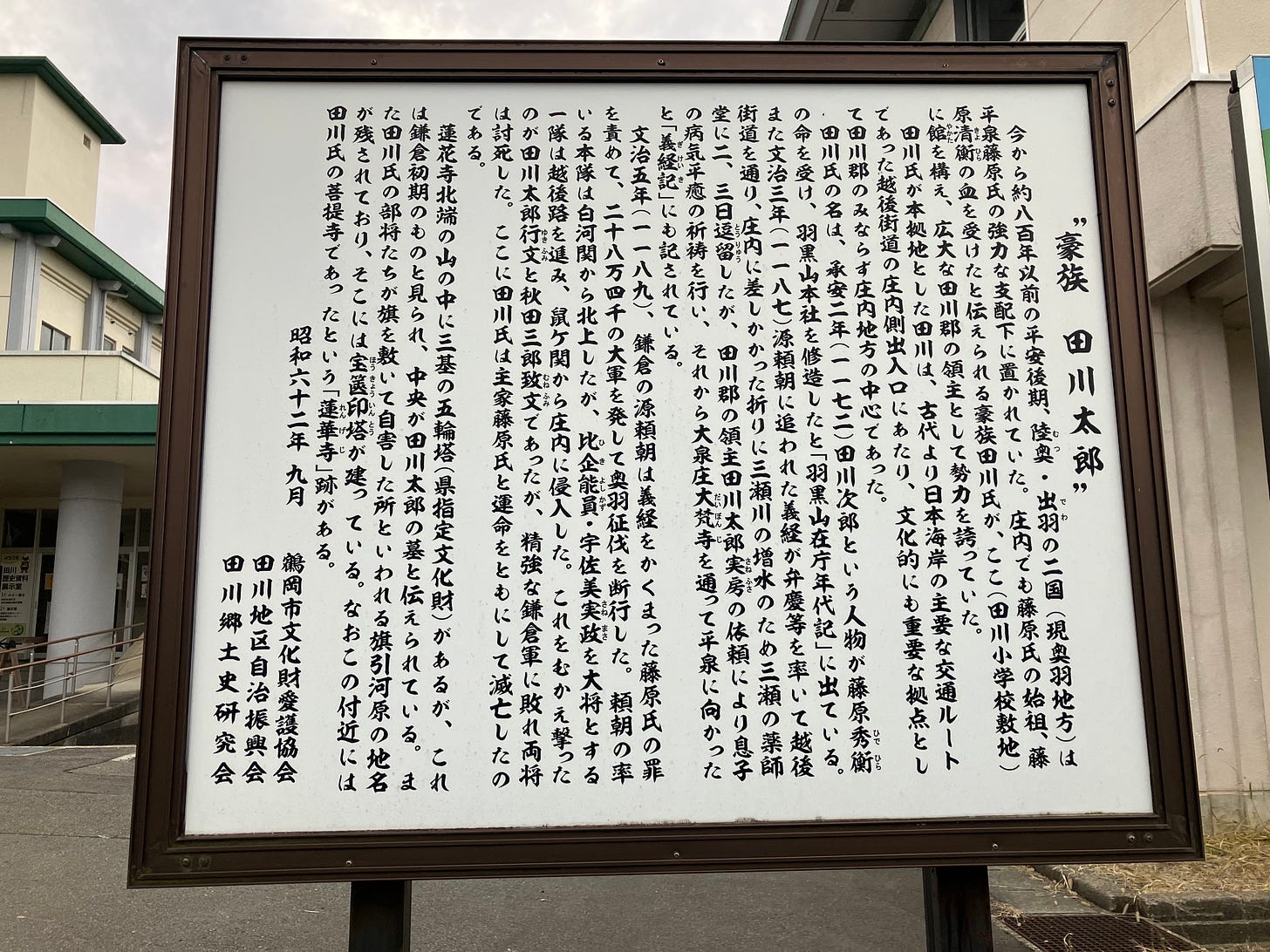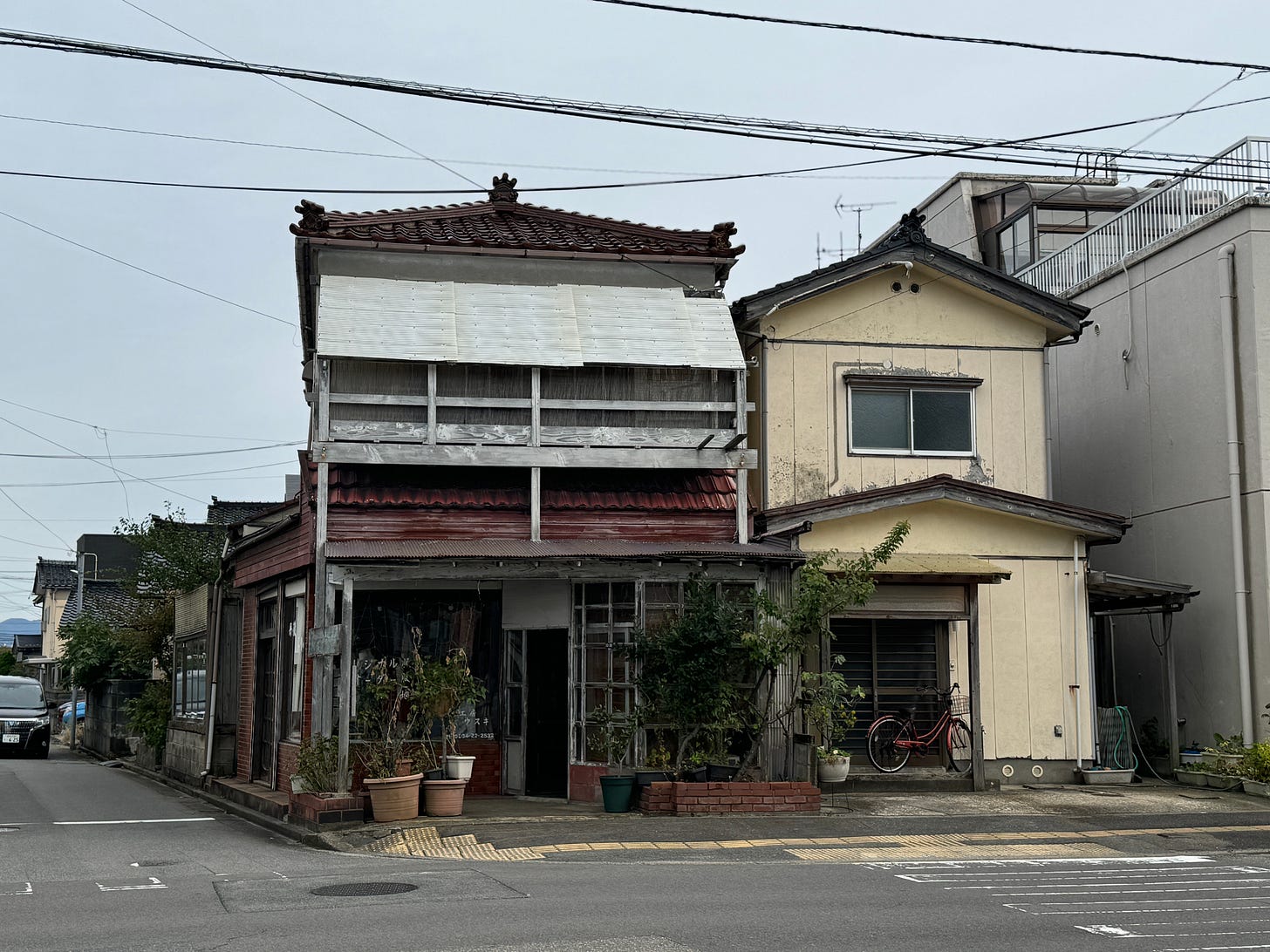A Story from Japan's Abandoned Elementary Schools
Treasure troves of local history!
Kia ora Koutou, Tim Bunting, Kiwi Yamabushi here on the Japan you never knew you wanted to know.
You are reading this thanks to the kindness of paid subscribers. If you like what you are reading and want more, support the author by becoming a paid subscriber yourself, or you could always just contribute to my coffee addiction.
What with the aging society, depopulation, and all that jazz, Japan has to decide what to do with all the elementary schools it has been closing down. For example, at least one school became a ‘glamping’ camp site, one I know of became an aquarium, and yet another one they found lied on top of a hot water spring and proceeded to turn it into an onsen (I’ve been there, it’s great!).
The onsen is in this area of Mt. Chokai:
However, not every school has a fresh supply of hot water, nor the ability to host all manner of aquatic creatures. Most schools just close up shop and expect someone to do something about it. It’s great when locals have great ideas, who doesn’t enjoy an onsen (I heard they even searched for a spring under the former Toge elementary school on Mt. Haguro), but it doesn’t always work out that way.
In fact, it hardly ever does.
And when I started my project to climb the 100 Famous Mountains of Yamagata, I never thought I would encounter a mountain with the smallest type of dragonfly in the world. I never thought I would come across a mountain with a name as long as Kumanonaga-mine either,
but still.
Climbing that mountain was probably the worst example of a successful summit you could ever read about.
However, it did lead to us stumbling across one of the most beautiful forest shrines I have ever been to. Coming from someone who has climbed Haguro-san at least 100 times that’s saying a lot.
Either way,
yesterday a dear friend of mine sent me a photo from the base of Kumanonaga-mine (try saying it fast five times).
This one, on the site of a former Elementary school:
Which, admittedly, looks like most slides in a Japanese powerpoint (I wish I were joking).
For people who can’t read Japanese it may not mean much, but for a sign on a former elementary school,
it means a lot.
So much so, instead of translating it myself I asked ChatGPT to do the work, which it did. As you’d expect it’s a bit winded so I’ll leave the translation below.
Either way, this abandoned school was once a very prosperous point on one of Japan’s main highways.
Highway’s I have talked about before:
Plus, it even saw action during the Gikeiki, the chronicles of Yoshitsune that I also talked about
waaay back in 2022:
And of course, there’s also mention of Mt. Haguro and it’s main shrine,
home to Japan’s thickest thatch roof:
All that on the site of an old elementary school. I’d hate to think about the other significant cultures we are saying goodbye to when we say goodbye to the elementary schools.
So much so, I’m going to try and document as much as I can!
Here’s the translation:
The Powerful Clan, Taro Tagawa
Approximately 800 years ago, during the late Heian period, the regions of Mutsu and Dewa (now known as the Oshu region) were under the powerful control of the Hiraizumi Fujiwara family. In Shonai, the Tagawa family, said to be descended from Kiyohira Fujiwara, the founder of the Fujiwara clan, established their residence here (the current site of Tagawa Elementary School) and wielded influence as the lords of the vast Tagawa District.
Tagawa, which served as the Tagawa clan's stronghold, was located at the Shonai-side gateway of the Echigo Kaido, a major route along Japan's western coast since ancient times. Culturally, it was a significant hub and was not only the center of Tagawa District but also of the Shonai region.
The name of the Tagawa clan appears in the "Hagurosan Zaicho Nendaiki" (Chronicles of Hagurosan's Administration), where it is recorded that, in the second year of the Keian era (1172), a man named Tagawa Jiro, on the orders of Fujiwara Hidehira, carried out the repairs of the main shrine on Mount Haguro (legend!).
Moreover, in the third year of the Bunji era (1187), when Yoshitsune, who was being pursued by Minamoto no Yoritomo, traveled through the Echigo Kaido with Benkei and others, they briefly stayed at Yakushi Hall in Sanze for two to three days due to the rising waters of the Sanze River.
According to "Gikeiki" (The Chronicle of Yoshitsune), the Shinto priest of Tagawa District, Tagawa Taro Sanefusa, prayed for the healing of his son, Kiyohira, before they proceeded through Daihoji Temple in Oizumisho on their way to Hiraizumi.
In the fifth year of the Bunji era (1189), the Kamakura shogunate, led by Yoritomo, dispatched a massive force of 284,000 to subjugate the Oshu region, accusing the Fujiwara clan of harboring Yoshitsune. While Yoritomo's main force advanced north from Shirakawa Barrier, a detachment led by Usami Sanemasa invaded Shonai through the Echigo Route via Nezugaseki. Tagawa Taro Yukifumi and Akita Nobutoshi met the Kamakura forces in battle but were ultimately defeated by the powerful Kamakura army, with both commanders falling in battle. Thus, the Tagawa clan met their demise alongside their liege lord, the Fujiwara clan.
At the northern end of Namihana-ji Temple stands three five-storied pagodas (designated as a cultural asset by the prefecture), thought to be from the early Kamakura period, with the central pagoda believed to be Taro Tagawa’s grave. The name Hatahikigawara (Flag Spread Riverbank), said to be where Tagawa’s officers laid down their banners and took their own lives, also remains, marked by a monument. Near this area is the site of "Dokaji Temple," which is said to have been the family temple of the Tagawa clan.
September, Showa 62 (1987)
Tsuruoka City Cultural Heritage Preservation Association
Tagawa District Self-Government Promotion Association
Tagawa Local History Research Society
Daily Yamabushi for This Week
Daily Yamabushi posts for the week of October 18 to 24, 2024.
Read Daily Yamabushi for free at timbunting.com/blog or Medium.com.
Mountains of Wisdom: Tell Your Friends!
You are reading this thanks to the kindness of paid subscribers. If you like what you are reading, support the author by becoming a paid subscriber yourself, or you could always Buy Me a Coffee.
Get more content on the Japan you never knew you wanted to know on my blog, YouTube, Instagram, Facebook, Twitter, LinkedIn, Threads, or Medium.com.
And if you like what I do, please don’t forget to:
Or if you haven’t already:
Ka kite ano.
Tim.




I liked the PowerPoint observation— spot on! And how intricate the explanation of the closed elementary school was! It felt like a “bit” though it wasn’t!